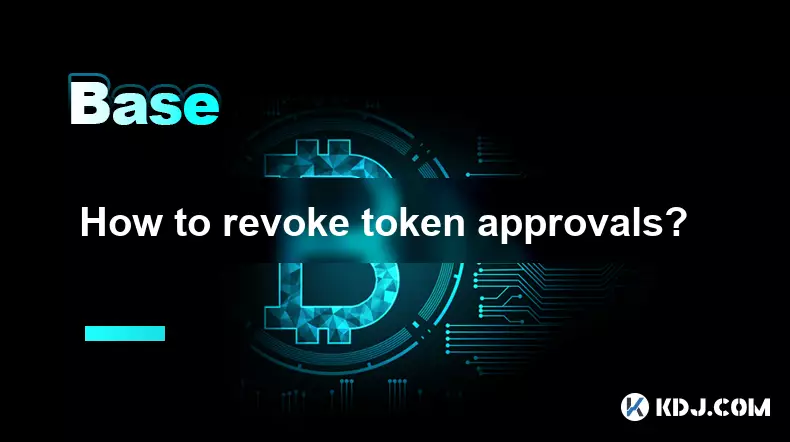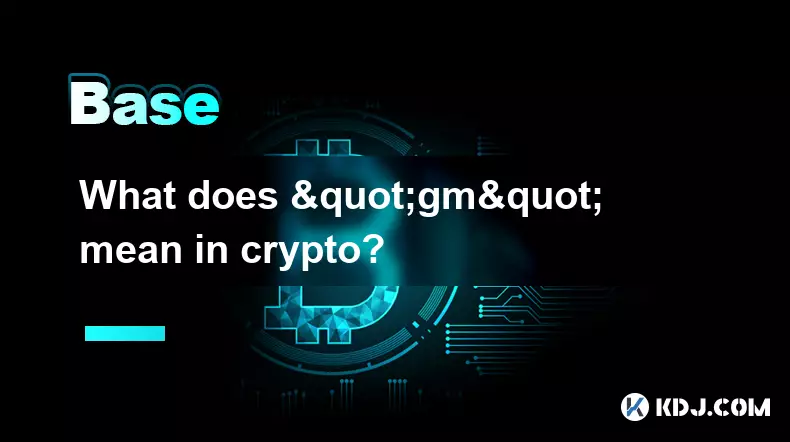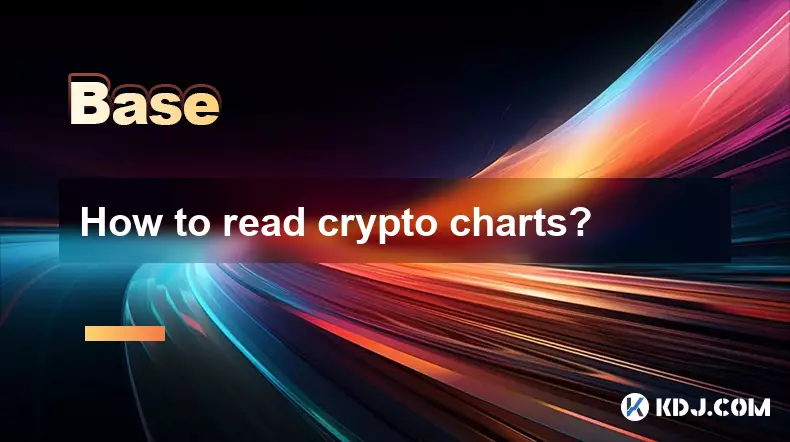-
 Bitcoin
Bitcoin $113200
1.54% -
 Ethereum
Ethereum $4368
1.43% -
 XRP
XRP $3.022
4.23% -
 Tether USDt
Tether USDt $0.0000
-0.01% -
 BNB
BNB $883.5
0.92% -
 Solana
Solana $219.5
5.29% -
 USDC
USDC $0.9997
-0.02% -
 Dogecoin
Dogecoin $0.2411
3.66% -
 Cardano
Cardano $0.8908
5.48% -
 TRON
TRON $0.3349
0.94% -
 Hyperliquid
Hyperliquid $54.50
8.93% -
 Chainlink
Chainlink $23.73
5.54% -
 Ethena USDe
Ethena USDe $1.001
-0.01% -
 Sui
Sui $3.602
5.47% -
 Stellar
Stellar $0.3861
5.90% -
 Bitcoin Cash
Bitcoin Cash $585.1
-1.13% -
 Avalanche
Avalanche $26.09
4.37% -
 Hedera
Hedera $0.2325
5.06% -
 UNUS SED LEO
UNUS SED LEO $9.549
-0.23% -
 Litecoin
Litecoin $114.2
1.13% -
 Cronos
Cronos $0.2502
-2.95% -
 Toncoin
Toncoin $3.134
1.24% -
 Shiba Inu
Shiba Inu $0.00001307
4.10% -
 Polkadot
Polkadot $4.148
3.50% -
 Uniswap
Uniswap $9.759
3.47% -
 Ethena
Ethena $0.8495
11.24% -
 World Liberty Financial
World Liberty Financial $0.2188
3.76% -
 Dai
Dai $0.9997
-0.03% -
 Monero
Monero $271.7
0.21% -
 Aave
Aave $309.2
2.95%
How to use DeFi lending and borrowing platforms?
DeFi lending platforms like Aave and Compound use smart contracts to enable trustless borrowing and lending, with algorithmic interest rates and over-collateralization to manage risk.
Sep 09, 2025 at 09:10 am

Understanding DeFi Lending and Borrowing Platforms
1. Decentralized finance (DeFi) lending and borrowing platforms operate on blockchain networks, primarily Ethereum, enabling users to lend or borrow digital assets without intermediaries like banks. These platforms use smart contracts to automate processes such as collateral management, interest calculation, and loan issuance. Users interact with these platforms through cryptocurrency wallets connected to decentralized applications (dApps).
2. To begin using a DeFi lending platform, users must first connect a compatible wallet such as MetaMask or WalletConnect. Once connected, they can deposit supported cryptocurrencies into a lending pool. These deposits earn interest over time, calculated based on supply and demand dynamics within the platform. The interest is typically paid in the same token deposited or in the platform’s native token.
3. Borrowing on DeFi platforms requires users to provide collateral, usually in the form of other cryptocurrencies. The loan amount is determined by the loan-to-value (LTV) ratio set by the protocol. For example, if the LTV is 75%, a user must deposit $1,000 worth of collateral to borrow up to $750. This over-collateralization protects the system from volatility and defaults.
4. Interest rates on DeFi platforms are algorithmically adjusted in real-time based on utilization rates. When many users are borrowing, rates increase to incentivize more lenders. Conversely, when borrowing demand drops, rates fall to encourage more borrowing activity. This dynamic mechanism ensures liquidity balance within the ecosystem.
5. Some platforms offer flash loans, which allow users to borrow large amounts of cryptocurrency without collateral, provided the loan is repaid within the same blockchain transaction. These are typically used for arbitrage, collateral swapping, or liquidation opportunities, and require advanced technical knowledge to execute safely.
Top DeFi Platforms and Their Features
1. Aave is one of the most widely used DeFi lending platforms, supporting multiple blockchains including Ethereum, Polygon, and Avalanche. It allows users to lend, borrow, and earn interest on over 30 different tokens. Aave also introduced features like credit delegation and variable vs. stable interest rates for borrowers.
2. Compound is another major player, known for its governance token (COMP) and transparent interest rate models. Users earn cTokens when they deposit assets, which accrue interest automatically. Borrowers must maintain a sufficient collateral ratio, monitored by the protocol’s health factor system.
3. MakerDAO enables the creation of DAI, a stablecoin pegged to the US dollar, through collateralized debt positions (CDPs). Users lock up crypto assets like ETH or WBTC in a vault and generate DAI loans. The system relies on over-collateralization and stability fees to maintain the peg and ensure solvency.
4. Each platform has unique risk parameters, supported assets, and governance models. Users should review the platform’s documentation, audit history, and community reputation before depositing funds. Some platforms integrate with yield aggregators or insurance protocols to enhance returns or mitigate risks.
5. Cross-chain lending platforms like Radiant Capital and Across are emerging, allowing users to leverage assets across different networks. These platforms reduce fragmentation and increase capital efficiency, though they introduce additional complexity in terms of bridging and security assumptions.
Risks and Security Considerations
1. Smart contract vulnerabilities are a major concern in DeFi. Even audited platforms can have undiscovered bugs that may lead to fund loss. High-profile exploits, such as those on bZx or Cream Finance, have resulted in millions of dollars in losses due to logic flaws or oracle manipulation.
2. Oracle manipulation is a critical risk, as lending platforms rely on external price feeds to determine collateral value and trigger liquidations. If an attacker influences the price reported by an oracle, they can artificially trigger liquidations or borrow more than the collateral supports.
3. Liquidation risks affect borrowers directly. If the value of collateral drops below a certain threshold, the position is liquidated, and the borrower loses part of their assets. Volatile markets can lead to rapid price swings, increasing the likelihood of such events.
4. Impermanent loss is not a direct risk in lending, but users providing liquidity elsewhere may face it. However, those using leveraged strategies or yield farming on lending platforms could indirectly expose themselves to similar risks through complex position structures.
5. Regulatory uncertainty also looms over DeFi. Governments may impose restrictions on anonymous lending or classify certain tokens as securities. This could impact platform accessibility or force changes in operational models, affecting user experience and fund availability.
Frequently Asked Questions
What happens if my collateral value drops suddenly?If the value of your collateral falls below the required threshold, the platform will automatically liquidate part of your position to repay the debt. You may lose a portion of your deposited assets, and some platforms charge a liquidation penalty.
Can I lend stablecoins and earn interest?Yes, most DeFi platforms support stablecoins like USDC, DAI, and USDT for lending. These typically offer lower but more predictable interest rates compared to volatile assets like ETH or BTC.
Are my funds insured on DeFi platforms?Most DeFi platforms do not offer traditional insurance. Some integrate with third-party coverage providers like Nexus Mutual or InsurAce, but protection is limited and often requires users to purchase coverage separately.
How are interest rates determined on these platforms?Interest rates are calculated algorithmically based on the utilization rate of each asset pool. When borrowing demand is high, rates rise. When more people supply assets than borrow, rates decrease to balance supply and demand.
Disclaimer:info@kdj.com
The information provided is not trading advice. kdj.com does not assume any responsibility for any investments made based on the information provided in this article. Cryptocurrencies are highly volatile and it is highly recommended that you invest with caution after thorough research!
If you believe that the content used on this website infringes your copyright, please contact us immediately (info@kdj.com) and we will delete it promptly.
- Fidelity, Ethereum, and Tokenized Money Market Funds: A Wall Street Thaw?
- 2025-09-09 20:45:12
- Hong Kong, Stablecoins, and Mining Contracts: A New Era for Crypto?
- 2025-09-09 20:45:12
- Solana Meme Coins: Riding the Viral Value Wave
- 2025-09-09 20:50:12
- Gemini, Nasdaq, and Investment: A New Era for Crypto?
- 2025-09-09 21:45:15
- Pi Network's Potential Collapse: Investor Losses and Lessons Learned
- 2025-09-09 20:50:12
- BlockchainFX: The Crypto Super App Redefining Decentralized Finance
- 2025-09-09 20:25:16
Related knowledge

What is social recovery for wallets?
Sep 09,2025 at 09:54am
Understanding Social Recovery in Cryptocurrency Wallets1. Social recovery is a security mechanism designed to help users regain access to their crypto...

How to revoke token approvals?
Sep 09,2025 at 12:18am
Understanding Token Approvals in the Crypto Ecosystem1. Token approvals are a foundational component of blockchain interactions, especially within dec...

What is a crypto sandbox?
Sep 09,2025 at 07:01pm
Understanding the Concept of a Crypto Sandbox1. A crypto sandbox is a controlled environment where blockchain and cryptocurrency projects can operate ...

What does "gm" mean in crypto?
Sep 09,2025 at 09:00pm
Understanding 'GM' in the Crypto Community1. The term 'gm' stands for 'good morning' and has become a widely used greeting within the cryptocurrency s...

How to read crypto charts?
Sep 08,2025 at 11:36pm
Understanding the Basics of Crypto Chart Types1. The most common chart type used in cryptocurrency trading is the candlestick chart. Each candlestick ...

What are Real World Assets (RWA)?
Sep 09,2025 at 06:37am
Understanding Real World Assets in the Cryptocurrency Ecosystem1. Real World Assets, commonly referred to as RWA, represent physical or traditional fi...

What is social recovery for wallets?
Sep 09,2025 at 09:54am
Understanding Social Recovery in Cryptocurrency Wallets1. Social recovery is a security mechanism designed to help users regain access to their crypto...

How to revoke token approvals?
Sep 09,2025 at 12:18am
Understanding Token Approvals in the Crypto Ecosystem1. Token approvals are a foundational component of blockchain interactions, especially within dec...

What is a crypto sandbox?
Sep 09,2025 at 07:01pm
Understanding the Concept of a Crypto Sandbox1. A crypto sandbox is a controlled environment where blockchain and cryptocurrency projects can operate ...

What does "gm" mean in crypto?
Sep 09,2025 at 09:00pm
Understanding 'GM' in the Crypto Community1. The term 'gm' stands for 'good morning' and has become a widely used greeting within the cryptocurrency s...

How to read crypto charts?
Sep 08,2025 at 11:36pm
Understanding the Basics of Crypto Chart Types1. The most common chart type used in cryptocurrency trading is the candlestick chart. Each candlestick ...

What are Real World Assets (RWA)?
Sep 09,2025 at 06:37am
Understanding Real World Assets in the Cryptocurrency Ecosystem1. Real World Assets, commonly referred to as RWA, represent physical or traditional fi...
See all articles
























































































